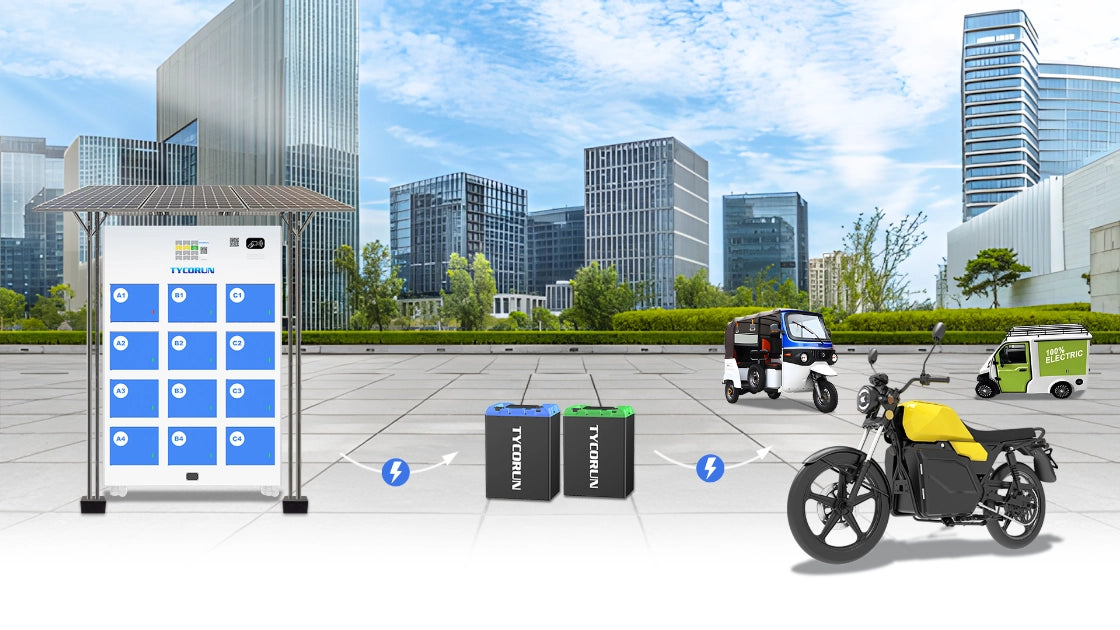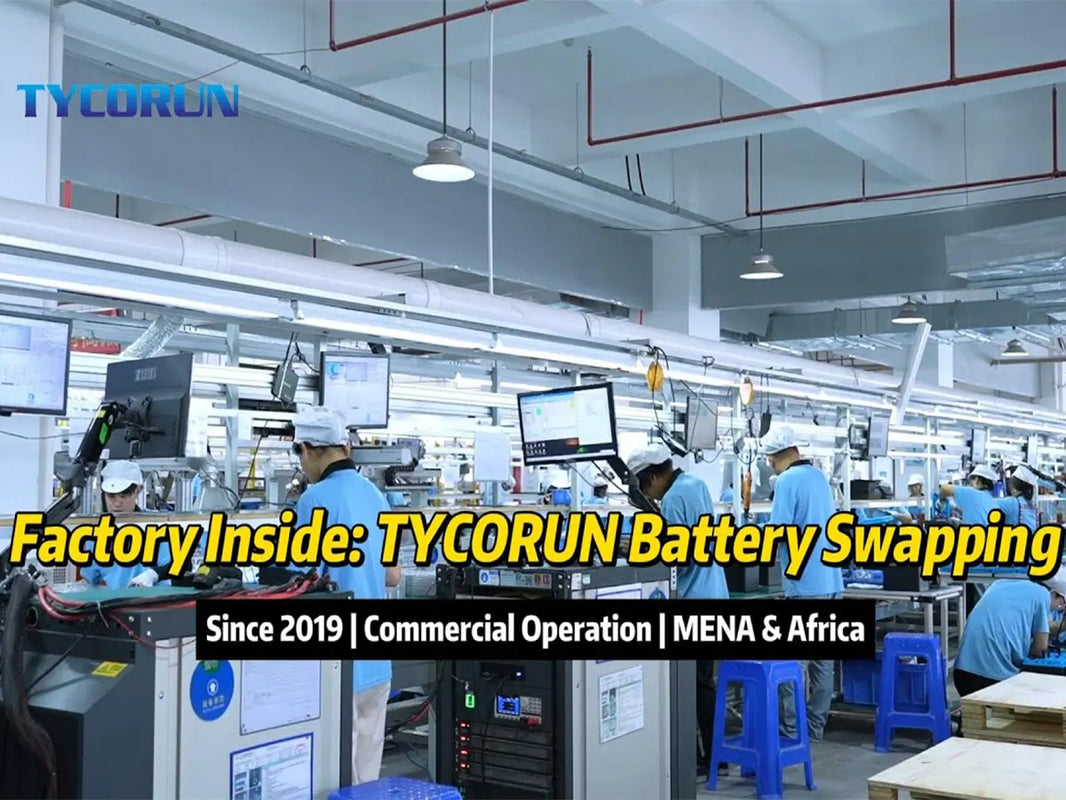
Main content:
When purchasing an electric vehicle, the importance of the battery as the core component of the vehicle is self-evident, as it directly affects the vehicle's range, power, and user experience.
There are many types of batteries on the market now, such as lead-acid batteries, ternary lithium batteries, lithium iron phosphate batteries, sodium batteries, etc. Each of these batteries has its own advantages and disadvantages. Then how to choose a suitable electric motorcycle battery?
This article will analyze in detail the advantages and disadvantages of each type of battery, and provide practical selection suggestions to help you easily choose the battery that is suitable for your own use.
The type of electric motorcycle battery
Ordinary lead-acid batteries are the most common batteries on the market, which are batteries with electrodes mainly made of lead and its oxides, and electrolytes made of sulfuric acid solution. As the most commonly used electric vehicle battery, lead-acid batteries are cheap and favored by low-priced electric vehicles. Ordinary lead-acid batteries have relatively ordinary performance in low temperature resistance, endurance, and power, and are very intolerant to low temperatures. Especially in the cold winter weather, the endurance of ordinary lead-acid batteries will experience a significant decrease. The common cycle charging and discharging times for lead-acid batteries are approximately 300 to 400 times. We take the intermediate level of 400 times, and based on the calculation method, we conclude that lead-acid batteries can theoretically last for about 3 years.
Lithium batteries have significant differences in raw materials compared to lead-acid batteries. Lithium batteries generally use materials containing lithium elements as electrodes.
The characteristics of ternary lithium batteries are small size, battery high energy density, good charging and discharging performance, powerful energy, and excellent performance, making it a power source for high-speed electric motorcycles with speeds exceeding 100km/h. The ternary lithium battery can be charged and discharged 800~1500 times, with a service life of 5~6 years. The advantages are light weight, high energy density, support for fast charging, and long range. The disadvantages are high price, poor safety, overcharging, overdischarging, and problems with the protective board, which may cause internal short circuits in the battery, leading to battery explosion and fire. The uncontrolled fire poses a great danger.
Lithium iron phosphate can be cyclically charged and discharged 1200 to 2000 times, with a service life of 6 to 8 years. Compared to ordinary lead-acid batteries, it has lighter weight, higher energy density, better thermal stability compared to ternary lithium batteries, and higher safety. Overcharging and over discharging will not cause fire or explosion. The disadvantages are poor battery consistency and poor low-temperature resistance. Lithium iron phosphate electric motorcycle battery has lower energy density than ternary lithium batteries, and is also larger in size. However, its cycle life is the longest among ordinary lithium batteries. Currently, lithium batteries used in two wheeled vehicles can achieve more than 2000 cycles. The complete decay period is 5-10 years, with a median of 8 years.
Sodium battery is a new type of battery. Although there is a lot of sodium element in nature and it is currently in a small amount of use, the technology is not yet mature. However, sodium battery electric vehicles have already been delivered to consumers.
It can be recharged and discharged 1500 to 2000 times, with a service life of 8 to 10 years. The advantages are light weight, high energy density, good low-temperature resistance, fast charging speed, and low battery self discharge rate. The disadvantage is that a complete industrial chain has not yet been formed and the selling price is high. Its advertised advantages have not been verified by the market.

What battery is best for electric motorcycle
Through the above general explanation of the types of electric motorcycle batteries, it can be understood that the durability ranking of batteries is sodium batteries lithium batteries lead-acid batteries. Of course, these are theoretical lifetimes, and in practical use, they generally do not reach the theoretical lifespan of batteries. So, which type of battery is the most suitable for electric motorcycle batteries?
The battery of an electric motorcycle is basically 72V, and the motor power is 1000-1200 watts. Do not install 20Ah or 23Ah batteries because the battery discharge current is small and cannot meet the discharge requirements of high current. Even if installed, it will increase the burden on the battery and heat generation due to the high power consumption of the motor, which will affect its service life. It is recommended to choose a 72 volt 38 ampere graphene lead-acid battery for a 72 volt electric vehicle.
The 72v lithium battery for electric bike has strong power. If it is in mountainous areas, it is recommended to install micro sodium lead carbon batteries, which are the upgraded lead-acid batteries. If it is in cold areas, it is recommended to install sodium batteries. If it is a long-distance motorcycle or food delivery, it is required that the battery has fast charging lithium ion battery speed and battery swapping function. It is recommended to install ternary lithium batteries, but choose large brands of ternary lithium batteries. If you are concerned about the safety of battery use and require high energy density, then choose lithium iron phosphate batteries.
A 72 volt electric motorcycle belongs to high-performance electric motorcycles, which are more suitable for owners who need higher speed and longer range. Its driving speed can exceed 50 kilometers per hour, and by configuring a large battery capacity, it can achieve a maximum range of 200 kilometers. Common batteries mainly have two capacities: 72V24Ah and 72V38Ah.

Is the lithium-ion battery worth it for a motorcycle
Buyers are all critical to whether lithium-ion motorcycle batteries are worth it. The following will answer this question from the perspectives of price, performance, range, and cost.
Lithium batteries, due to their high price, lead acid batteries are still the mainstream choice for electric motorcycle batteries in the electric vehicle market.
Electric motorcycle battery performance
The discharge current is the high current that a battery can provide in a short period of time. In electric motorcycles, the magnitude of discharge current directly affects the acceleration performance of the vehicle.
Lithium batteries have a high discharge rate, which means that when high current discharge is required, lithium batteries can quickly release electrical energy, providing strong acceleration power for electric motorcycles. The discharge rate of lead-acid batteries is relatively low, and their acceleration performance is relatively weak.
Electric motorcycle battery endurance
According to the general range calculation formula, lead-acid batteries with 72V 20Ah typically have a range of 60-70KM. If you ride at medium or slow speeds, the range can reach around 80KM. The 72V 20Ah lithium battery has a range similar to lead-acid batteries, but the battery volume is at least three times smaller than lead-acid batteries.
This means that electric motorcycles equipped with lithium batteries can travel longer distances under the same conditions. In contrast, lead-acid batteries have relatively weaker endurance due to their lower energy density.
At the same time, the standard capacity of lead-acid batteries is only available in three levels: 12Ah, 20Ah, and 32Ah, while there are many capacity options for lithium batteries. Choose any 150Ah, with a range of up to 300KM to 500KM.
Service life and maintenance cost
The service life of lithium batteries is generally longer than that of lead-acid batteries. This is due to the higher number of charge and discharge cycles and more stable chemical properties of lithium batteries. In addition, the maintenance cost of lithium batteries is relatively low. Due to the fact that lithium batteries are less prone to problems such as leakage and bulging, losses caused by improper maintenance are reduced.
Therefore, for electric motorcycle users who pursue high performance, long range, and environmental protection, lithium batteries are undoubtedly a better choice.

Which battery is best for an electric motorcycle
Tycorun’s electric motorcycle battery is the best for you to choose. We have our own factory manufacturing electric motorcycle battery. Tycorun Strictly control raw materials, production processes, quality control, and quality testing. The electric motorcycle battery produced by Tycorun has sufficient capacity, long range, and a long service life. It has a comprehensive after-sales system and provides a two-year warranty.
In addition, Tycorun also provides customized services. Currently, it has designed an advanced 73V 30Ah electric motorcycle battery specifically for African motorcycle needs, which has a built-in BMS for intelligent protection, Bluetooth compatibility, and multifunctional customization functions, providing stable and reliable power support to safeguard your riding experience.

Conclusion
When purchasing an electric vehicle, battery selection is crucial. 72 volt electric motorcycle battery, it is recommended to install lithium iron phosphate battery, especially for food delivery needs, which require high battery energy density and long range, but choose a large brand. In short, when choosing an electric motorcycle battery, it is important to consider factors such as budget, range, safety, and the local environment (temperature, road conditions) to select the appropriate battery. If there is a customization requirement, Tycorun is here for your service.
Related articles: Top LiFePO4 power battery companies in the world, Top 10 LiFePO4 battery companies in the US, Top 10 power battery cell manufacturers
















